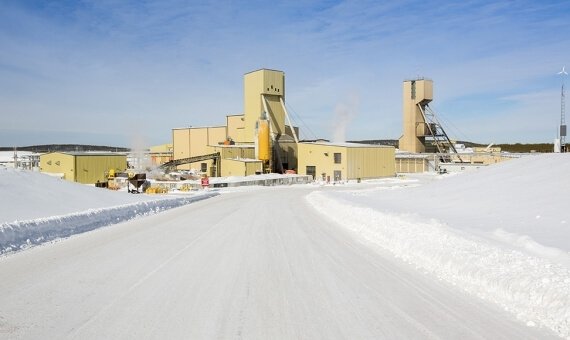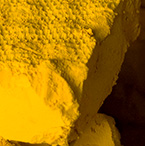Cameco to Increase Spot U3O8 Purchase after Suspending Cigar Lake

Following the suspension of the Cigar Lake Uranium mine in Northern Saskatchewan, Canada, Brandon Munro discusses the implications.
Cameco announced on Monday that it will temporarily suspend production at Cigar Lake, the world's largest Uranium mine, due to the worsening COVID-19 conditions in Northern Saskatchewan, Canada. Cigar Lake produces 1.5Mlbs U3O8 per month. Cameco will need to make up its 50% share of that production through spot purchases.
How long will this suspension last?
Cameco have not placed a timeframe on the suspension, but have noted that restarting the mine will depend on availability of required workforce, pandemic trends in Northern Saskatchewan and "the views of public health authorities".
It is possible that the suspension will only be weeks. Cigar Lake runs on a two-week shift roster, which for many mines around the world enables COVID-19 outbreaks to be snuffed out within 1-2 roster rotations. However, Cameco needs to balance a complex range of considerations before recommencing production.
Cameco is an employer of choice and, as Tim Gitzel told Bloomberg, the firm has a “special relationship” with its employees. Gitzel emphasised that protecting employees is their top priority alongside the “betterment of the community”, adding that “we take the ‘S’ in ESG really seriously around here”.
Further, although there have only been 3 cases on-site and all Cameco's COVID-19 protocols are working well, Cameco is concerned that a lack of workers in critical roles at the mine will threaten mine safety and productivity. Cigar Lake is a highly complex operation and worker availability is reduced by pandemic-induced self-isolation, absenteeism and increasing regional transport restrictions from remote communities to the site.
Saskatchewan has seen a sharp uptick in COVID-19 cases in recent weeks, with official stats showing around 4000 active cases, including around 200 active cases in the Far North East zone where Cigar Lake is located. As with much of the northern hemisphere, the trajectory of cases from here is highly uncertain with Christmas introducing additional challenges for pandemic control. It is not unreasonable to expect high winter infection rates to continue until March, when average temperatures moderate to only mildly freezing.
The views of public health authorities, and their community constituents, introduce an additional element of uncertainty. If the calming of health authority nerves is a pre-requisite to reopening the mine, you can expect Cigar Lake to be suspended for months, not weeks.
Northern community leaders are deeply concerned by the renewed outbreaks and the far north is particularly vulnerable as it lacks an intensive care unit. These concerns should be considered in the context of the indigenous communities of Northern Saskatchewan, who suffered greatly during the Spanish Flu. Many communities have lock-downs in place with checkpoints and other self-imposed restrictions. Health authorities fear a breach of these protections from community members who are employed as fly-in/fly-out mine workers.
Cameco is a genuinely outstanding corporate citizen and counts amongst its ESG credentials the prioritisation of indigenous employment in northern Saskatchewan which has led to half of Cigar Lake’s employees coming from northern indigenous communities. Through its proactive and assertive actions in March and today, Cameco has avoided the risk that their good name becomes synonymous with outbreaks amongst northern indigenous communities. This will remain on their mind when considering the restart date.
As with the March suspension, Cameco will be cautious not to be impatient when turning the lights back on. Cameco had dearly wanted to avoid this situation – restarting the mine only to repeat the suspension – so I would expect they will have an eye firmly on vaccine and rapid testing developments to make sure that the next restart will be permanent.
What effect will this have on the market?
To understand the impact on the uranium market, one needs to think in terms of direct effects on uranium availability and also the indirect drivers of sentiment in a sector that is already coiled like a spring. COVID-19 disruption to 2020 supply had already doubled the 2019 structural deficit to 40Mlbs, more than 20% of annual uranium consumption.
The direct impact will be the absence of 1.5Mlbs of uranium for each month that Cigar Lake is suspended. Cameco will make up its share (50%) by increasing its purchase of uranium on the spot market.
Orano will feel the hurt from losing its 37% production share for any sustained period, given that its Cominak mine in Niger is shutting down by March and their Katco joint venture in Kazakhstan is at part production after the lagged effects of Kazatomprom’s decision to suspend well head development between April and August.
The uranium spot price has been range bound on low volumes for several weeks within US$29-30/lb, after hitting a 5 year high of US$34.25/lb in May. It has languished primarily because utility fuel buyers, exhausted after a rather challenging year, have been looking forward to catching their breath over Christmas before considering when and how to top up their inventory.
Trading volumes have been reported at less than 500,000lbs per week. Ironically, some of this volume is likely to be Cameco already buying for its contract deliveries to replace suspended production from its flagship McArthur River mine and reduced production from its Inkai joint venture in Kazakhstan. If volumes continue to be this low, the effect of an additional monthly order for 750,000lbs will be pronounced.
The immediate response to Cameco’s announcement was a little sluggish, although the spot price has moved through the US$30/lb barrier and analysts expect further price jumps. Time of year will have much to do with this – compare Cameco’s March 23 announcement, when spot appreciated 6% on the day (admittedly off an absurdly low base). But investors should not put too much emphasis on this subdued move, as both traders and utilities already have their sights locked on Christmas dinner and a COVID-inspired binge watch on their sofa.
However, the recent flow (dare I say, flood) of money from Wall Street into uranium equities should be a warning sign of what 2021 could deliver. The brute volume of hedge fund money that can be applied against an attractive thematic like uranium can be defining in a thinly traded spot market. A proportion of that investment will find its way into Yellowcake plc and Uranium Participation Corp (either through direct investment or through their prominent weighting in the URA and URNM ETFs).
Until a week ago YCA was trading at a hefty NAV discount that effectively prohibited raising funds to buy more physical uranium. Now that discount has almost closed and, with a few trading days remaining before expiry of YCA’s 2020 option to acquire up to US$100m of uranium from Kazatomprom, I will be watching Yellowcake very closely. At current spot prices, an exercise of that option would draw more than 3Mlbs from Kazatomprom’s depleted inventory, almost certainly forcing them to increase their reported purchases of “small volumes” in the spot market.
Ultimately, however, the most influential effects may derive from the capacity of hedge funds to invest directly into U3O8. Dedicated uranium historians will recall Bob Mitchell’s Adit Capital, who was a first mover in 2004 making a bet on physical uranium by initially acquiring 2 million pounds at below $20/lb. By 2007 Bob’s fund returned 500% to investors (after his well-earned fees). Investor holdings of physical uranium had increased to an estimated 40Mlbs at the peak of the last boom, exaggerating upward price movements during 2006 and 2007.
Wall Street types will see an opportunity here, and not only to participate in uranium’s unique asymmetrical risk profile. If both Cameco and Kazatomprom are buying in spot (and the market is clearing a mere 450,000lbs per week) what would some competitive spot buying action do for those newly unwrapped share certificates they have been voraciously acquiring over the last two weeks? If you think my insinuations are far-fetched, take the afternoon off and read the 2004 US Senate report on Wall Street Bank Involvement with Physical Commodities.
Regardless of whether or why the spot price surges on this news, the indirect impact will be important for equities investors. The strident re-rating of uranium stocks over the last three weeks was at risk of faltering over Christmas, in the absence of spot price gains or another catalyst. With this news we have both – and investors’ hope of addressing their FOMO during a substantial pull-back may soon be temporarily suspended.
Analyst's Notes




Subscribe to Our Channel
Stay Informed












































